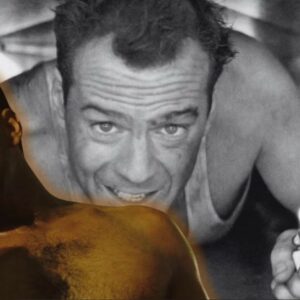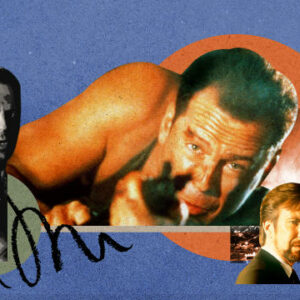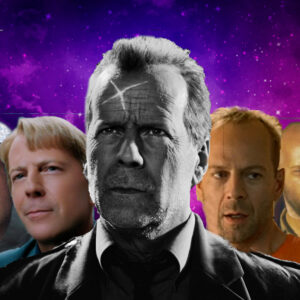Cillian Murphy, an actor whose name has become synonymous with depth, intensity, and a certain enigmatic charm, has risen to prominence in the world of entertainment with a trajectory that is as fascinating as it is impactful. Known for his diverse roles and the unique ability to breathe life into complex characters, Murphy has become a significant cultural force, influencing both societal norms and fashion trends. This article delves into Murphy’s rise to prominence, his iconic roles, and the broader impact he has had on modern culture.
Early Career and Breakthrough
Cillian Murphy’s journey to stardom began with a series of small but significant roles in the early 2000s. His early career is marked by a diverse range of performances that showcased his versatility. Murphy’s breakthrough came with the film 28 Days Later (2002), where he played Jim, a survivor in a post-apocalyptic London. This role was pivotal in establishing Murphy’s reputation as a compelling actor capable of carrying complex emotional weight.
His initial roles were instrumental in laying the foundation for his future influence. Murphy’s ability to navigate between intense drama and subtle, nuanced performances quickly set him apart from his contemporaries. His role in Intermission (2003) further demonstrated his capacity to blend into various character types, solidifying his place in the industry.
Iconic Roles and Public Image
Cillian Murphy’s career is marked by several iconic roles that have significantly shaped his public image and cultural influence. Perhaps most notable is his portrayal of Thomas Shelby in Peaky Blinders (2013-2022). Shelby, the charismatic and morally ambiguous leader of the Shelby crime family, allowed Murphy to explore themes of power, loyalty, and the struggles of post-war Britain. The character’s distinctive style—tailored suits, flat caps, and an intense gaze—became iconic, setting trends in fashion and popular culture.
Murphy’s role as Dr. Jonathan Crane/Scarecrow in Christopher Nolan’s The Dark Knight trilogy (2005-2012) is another defining moment in his career. His portrayal of Scarecrow, with his disturbing yet captivating performance, added a layer of psychological complexity to the superhero genre, influencing how villains are depicted on screen.
These roles contributed significantly to Murphy’s public image. His ability to embody characters with depth and complexity has earned him a reputation as a serious and thought-provoking actor. This public perception has amplified his influence, extending beyond the screen into various facets of modern culture.
Fashion and Trends
Murphy’s impact on fashion is undeniable. His roles, particularly as Thomas Shelby, have inspired a resurgence of vintage and classic menswear. The tailored suits, waistcoats, and flat caps worn by Shelby have become symbols of a timeless, sophisticated style that resonates with audiences. Fashion designers and enthusiasts have noted the influence of Shelby’s wardrobe in contemporary menswear collections.
Moreover, Murphy’s personal style, often characterized by a minimalist, understated approach, has further contributed to his influence on fashion trends. His preference for sleek, classic pieces that exude an effortless elegance aligns with a broader cultural shift towards refined simplicity in fashion.
Societal Norms and Cultural Shifts
Murphy’s portrayals of complex characters have had a profound impact on discussions about societal norms. His roles often delve into themes of masculinity, mental health, and moral ambiguity, challenging traditional perceptions and encouraging more nuanced conversations.
For instance, Thomas Shelby’s character in Peaky Blinders addresses issues such as trauma, mental health, and the effects of war. Shelby’s struggles with post-traumatic stress disorder (PTSD) and his complex relationships challenge traditional notions of masculinity, presenting a more vulnerable and multifaceted portrayal of men in media. This representation has contributed to a broader acceptance and understanding of mental health issues.
Additionally, Murphy’s role in films like In the Name of the Father (1993) and The Wind That Shakes the Barley (2006) highlights historical and political themes, shedding light on social injustices and historical conflicts. His performances in these films have sparked discussions about political and cultural history, further emphasizing his role in shaping societal perspectives.
Public Persona and Media Influence
Murphy’s public persona, characterized by his introspective and somewhat reserved nature, has only added to his mystique and influence. Unlike many of his peers, Murphy rarely seeks the spotlight outside of his professional work, which has cultivated an aura of enigmatic charm. His interviews and public appearances often reflect a thoughtful and articulate individual who remains grounded despite his success.
This media presence has reinforced his status as a cultural icon. Murphy’s ability to maintain a level of privacy while simultaneously capturing the public’s imagination speaks to his influence. His presence in interviews and media coverage often shifts the focus to the artistic aspects of his work, rather than sensationalism, reinforcing his position as a serious and respected figure in the industry.
Legacy and Future Impact
Cillian Murphy’s legacy is one of profound impact and influence. His ability to consistently deliver performances with depth and authenticity has cemented his place in modern cultural history. As he continues to take on new roles and explore different facets of his craft, there is considerable anticipation regarding how his future projects will shape cultural trends.
Murphy’s ongoing influence can be seen in the ways his work continues to resonate with audiences and inspire discussions about societal issues. His commitment to portraying complex, multi-dimensional characters suggests that his impact will extend well beyond his current body of work.
Speculation about his future roles only adds to the intrigue surrounding Murphy. Given his track record of choosing projects that challenge conventional norms and provoke thought, it is likely that his future work will continue to shape and influence cultural trends in meaningful ways.
Conclusion
Cillian Murphy’s rise from a relatively unknown actor to a cultural icon is a testament to his exceptional talent and the significant impact he has had on modern culture. From his early career breakthroughs to his iconic roles and influence on fashion, Murphy’s journey is marked by a series of achievements that have left a lasting impression on society.
His portrayal of complex characters has not only contributed to discussions about societal norms but has also influenced perceptions of masculinity and mental health. Murphy’s public persona and media presence further reinforce his status as a cultural force, shaping trends and inspiring conversations across various domains.
As we look to the future, Cillian Murphy’s ongoing influence promises to continue shaping cultural trends and societal perspectives. His legacy, built on a foundation of authenticity and depth, will undoubtedly leave an indelible mark on the world of entertainment and beyond.





